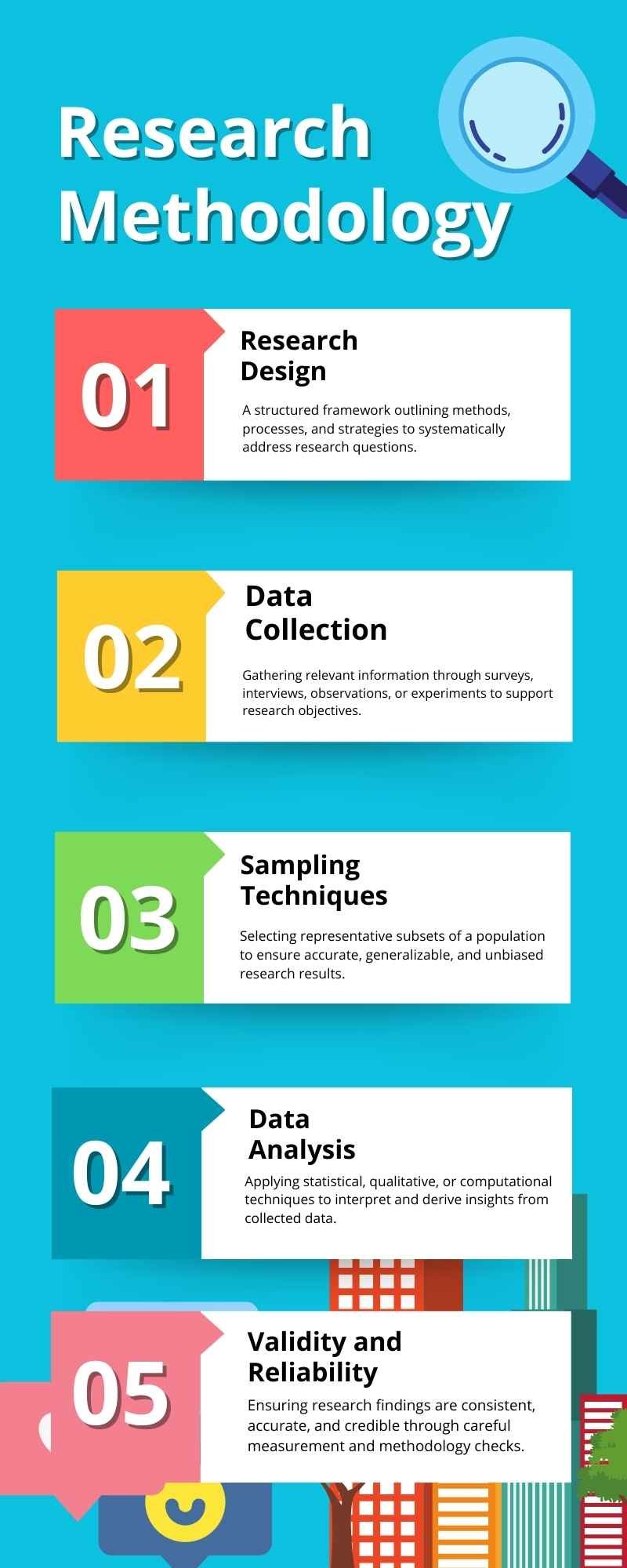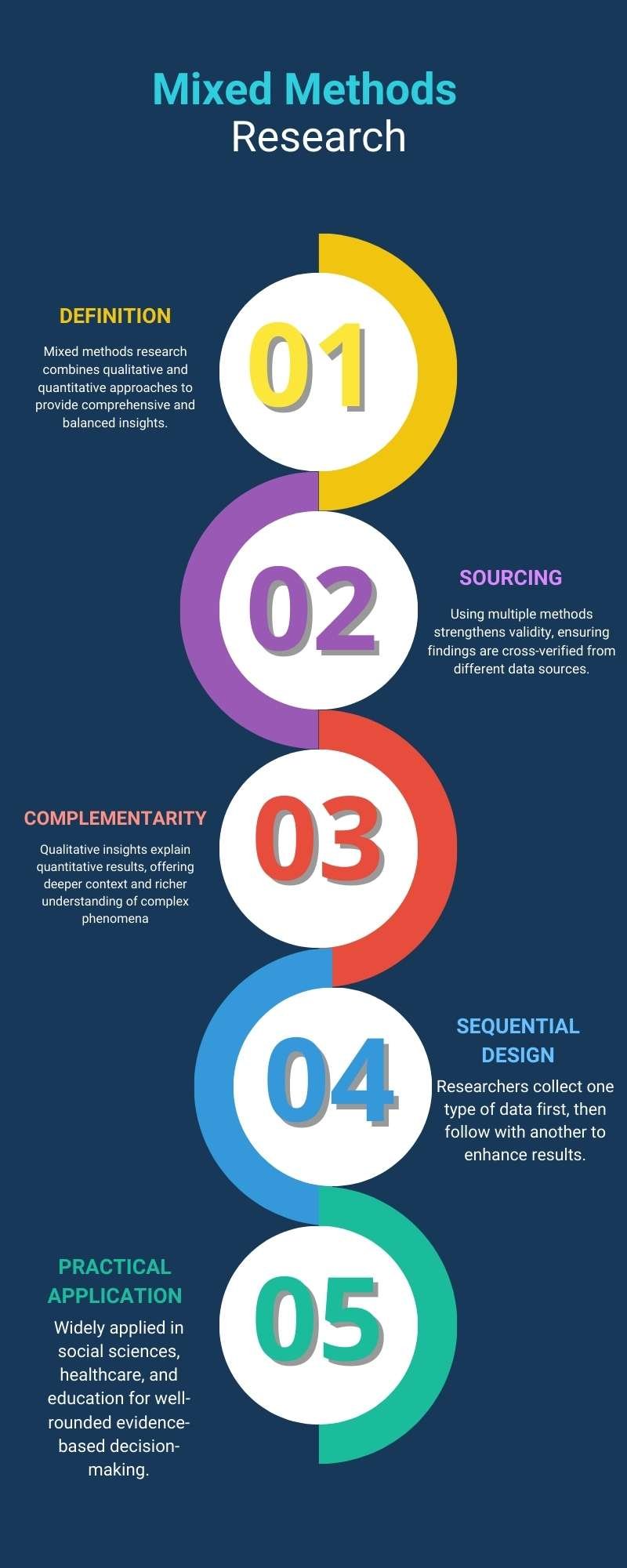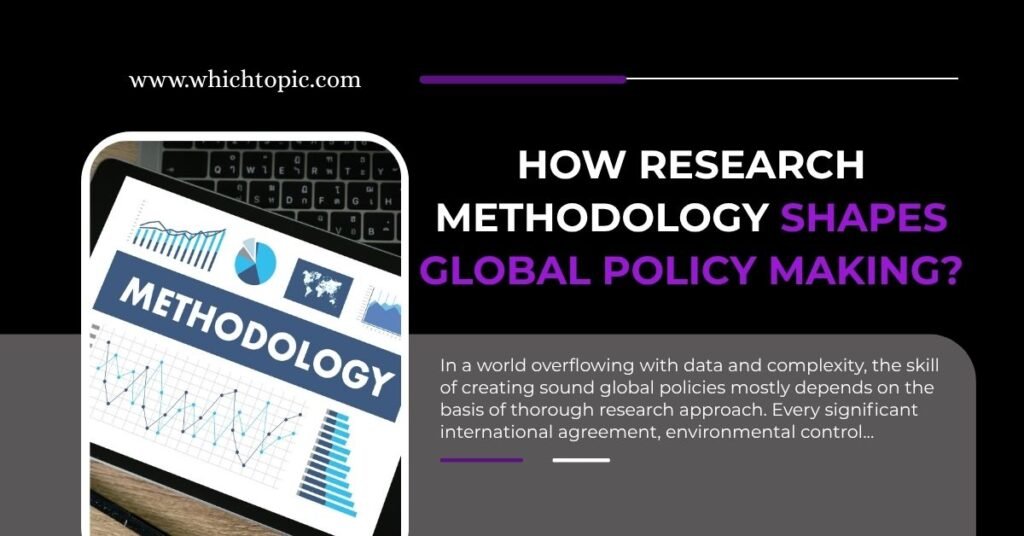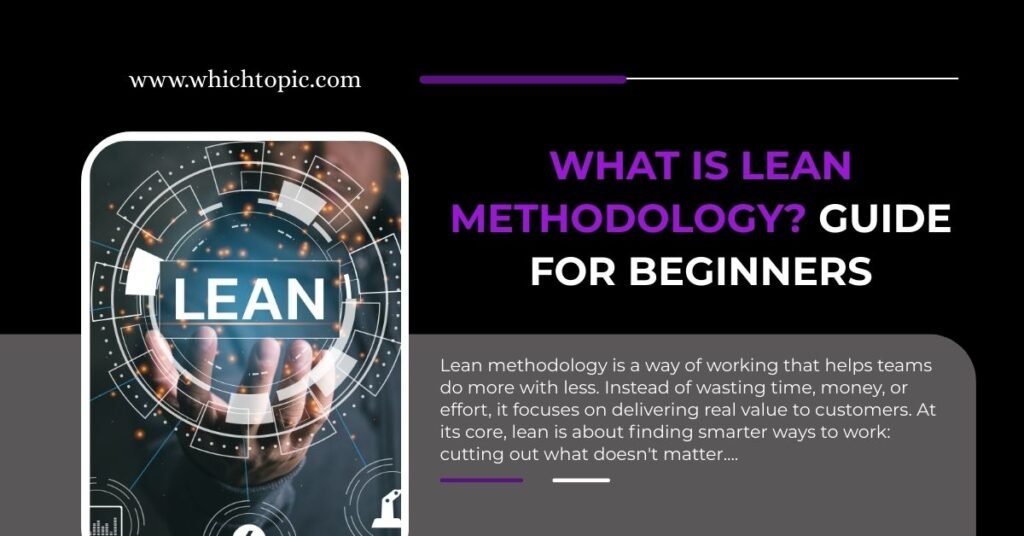Research methodology is the backbone of any study. It describes the procedures, methods, and resources used by researchers to gather and examine data. Choosing the proper methodology shapes the quality and accuracy of results.
At its core, research methodology is about answering two big questions: how the research will be conducted and why a specific approach is chosen. For example, a marketing team may use surveys to study customer behaviour, while a scientist might run controlled experiments to test a new theory. Both are research methods, but they follow very different paths.
The field covers qualitative, quantitative, and mixed methods, each offering unique strengths. Whether it’s measuring numbers, exploring human experiences, or combining both, methodology ensures that findings are reliable and meaningful. Without a transparent methodology, research risks becoming guesswork.

Qualitative Research
| Aspect | Details |
| Definition | Studies human behavior, emotions, and experiences using non-numerical data (words, stories, meanings). |
| Purpose | Explains the “why” and “how” behind actions or thoughts; provides deep insights beyond numbers. |
| Fields of Use | Social sciences, psychology, education, marketing, cultural studies. |
| Common Methods |
|
| Real-World Example | A company testing a new app conducts focus groups to explore user feelings about design and usability. |
| Key Advantage | Produces rich, detailed insights that guide better decisions in business, education, and research. |
Quantitative Research
Definition: Quantitative research methodology deals with numbers, measurable data, and statistical analysis to draw reliable conclusions.
Purpose: Provides evidence-based insights, helps in making predictions, and tests relationships between variables.
Data Collection Methods:
- Surveys with rating scales
- Structured questionnaires
- Controlled experiments
- Statistical records and databases
Example in Business: An e-commerce brand surveys to rate customer satisfaction on a scale of 1 to 10, then analyses the data to identify areas for service improvement.
Example in Healthcare: A medical study measures how different drug doses impact recovery rates using large patient samples.
Key Strengths:
- High accuracy and objectivity
- Large sample sizes make results reliable.
- Easy comparison of trends and patterns
- Supports data-driven decision making
Mixed Methods Research
Definition
- Quantitative research (surveys, experiments, statistics) and qualitative research (interviews, case studies, observations) are combined in mixed methods research.
- It offers a more complete view of complex problems by merging both approaches.

Purpose & Importance
- Provides deeper insights by validating results from multiple perspectives.
- Helps explain what is happening (quantitative) and why it is happening (qualitative).
- Common in education, healthcare, business, and social sciences.
Key Designs in Mixed Methods Research
- Convergent Parallel Design – Gathers qualitative and quantitative data simultaneously and combines the results.
- Explanatory Sequential Design – Starts with quantitative data, then uses interviews or case studies to explain results.
- Exploratory Sequential Design – Begins with qualitative insights, then tests them with quantitative data.
Real-World Example
- A business may use surveys to measure customer satisfaction (quantitative) and interviews to understand customer emotions or expectations (qualitative).
- In education, exam scores (quantitative) may be paired with student feedback (qualitative) to improve teaching methods.
Benefits
- Stronger and more reliable findings.
- Better decision-making for researchers, educators, and businesses.
- Adaptable to real-world problems where one method alone is not enough.
Applied vs. Basic Research
| Aspect | Basic Research | Applied Research |
| Definition | Seeks to expand knowledge and build theories without immediate practical use. | Focuses on solving real-world problems using existing theories. |
| Goal | To answer “why” and “how” questions about a concept or phenomenon. | To find solutions that can be applied in practice or industry. |
| Nature | Theoretical and exploratory. | Practical and problem-oriented. |
| Example | Studying how memory is formed in the human brain. | Creating a mobile app to improve memory retention using cognitive research. |
| Outcome | Generates new knowledge and concepts. | Applies knowledge to improve systems, products, or processes. |
| Timeframe | Long-term benefits with no immediate application. | Short-term and direct results for society or businesses. |
Other Common Research Approaches
Research goes beyond qualitative, quantitative, or mixed methods. Several other research approaches are widely used depending on the problem, goal, or field of study. Here are the most common ones:
- Action Research
- Focuses on solving real-world problems while generating knowledge.
- Often applied in education, management, and social sciences.
- Example: A teacher is testing new classroom strategies to improve student learning.
- Longitudinal Research
- Studies the same group or subjects over a long period of time.
- Useful in psychology, healthcare, and behavioural studies.
- Example: Tracking how childhood nutrition impacts adult health.
- Cross-Sectional Research
- Observes a group of people at a single point in time.
- Often used for surveys, market research, or demographic analysis.
- Example: A company studying consumer preferences during a festival season.
- Exploratory Research
- Carried out when the subject is novel or poorly understood.
- Helps researchers generate hypotheses for future studies.
- Example: Exploring the impact of AI tools on creative industries.
- Explanatory Research
- Seeks to determine the reasons underlying particular trends or actions.
- Helpful in building theories and strengthening existing research.
- Example: Explaining why some startups succeed while others fail.
Conclusion
Understanding the types of research methodology is essential for anyone conducting academic or professional studies. Whether you choose qualitative research to explore human experiences, quantitative research to analyse measurable data, or a mixed methods approach to combine both, the choice shapes the accuracy and depth of your findings. For example, a business studying customer behaviour might use surveys (quantitative) alongside interviews (qualitative) to gain a complete picture.
The correct methodology not only improves the reliability of results but also makes the research more practical and actionable. In education, health, business, or technology, selecting the proper method ensures that data leads to meaningful insights. As research continues to evolve, being aware of these approaches helps students, professionals, and organisations make smarter decisions. Ultimately, the strength of any study lies in choosing and applying the correct methodology with clarity and purpose.


